Key Takeaways
- Flex space offers higher returns and reduced risk compared to traditional warehousing.
- Flexible leases, modular layouts, and bundled utilities make it easier for investors and tenants to adapt quickly to market demands.
- These spaces appeal to modern businesses such as e-commerce, startups, and logistics companies, supporting agile operations and cost savings.
Why Flex Space Is Reshaping the Industrial Real Estate Landscape
If you want higher returns and less risk, flex space could be your game-changer.
Unlike traditional, rigid warehouse leases that lock you in for years, flex spaces let you adapt fast with short terms, modular layouts, and bundled utilities.
Tech-friendly and ready for hybrid uses, they attract modern tenants—think e-commerce, startups, and logistics—all while keeping costs leaner and operations agile.
Curious about where this shift is heading and how to seize the opportunity?
Lease Structures and Flexibility
When you’re exploring warehouse options across the U.S., understanding lease structures and flexibility can feel overwhelming.
You’ll find that traditional leases are full of lease complexity, asking for multi-year commitments—sometimes five years or more—and placing almost every risk on you.
For investors, traditional warehouse leases can also expose you to significant vulnerabilities during market cycles, where longer-term commitments could hinder adaptability.
They often pass on full maintenance duties and tax hikes, leaving you juggling details and big financial risks.
Flex leases, on the other hand, strip away some confusion.
Flex warehouse spaces are also about 50% less expensive per square foot compared to traditional office space, which can significantly lower ongoing operational costs.
You’ll get modular contracts, shorter terms—often as short as six months—and bundled costs for utilities and cleaning.
Risk management improves, thanks to shared liabilities for common areas and easier terms for expansion or exit.
If you’re concerned about responsibility and change, flex spaces make it easier to adapt without excessive penalties.
Space Configuration and Customization
So, when you opt for flex space in the U.S., you’re not just getting an empty box—you’re unlocking a world of possibilities.
Want to move a wall, carve out a new collaboration area, or turn part of the space into a showroom?
Go for it!
Modular layouts mean you can tailor everything to fit what you need right now, and pivot easily if things change down the line.
Open floor plans support multiple functions, making it easy to adapt your environment to evolving business needs. It’s all about designing a space that works as hard as you do.
Now, let’s take a closer look at the kinds of businesses making the most of this flexibility…
Hybrid Layout Versatility
Imagine walking into a building where warehouse racks sit just steps away from modern office desks and even a small retail section.
That’s the magic of hybrid layout versatility in flex spaces. You’re not locked into a single-purpose setup; you can easily configure zones for warehouse, office, or retail needs—all under the same roof.
This dynamic approach boosts interior lighting, helps optimize your lease renewal discussions, and ensures you never waste a square foot.
In today’s market, flex spaces increasingly support the rise of hybrid work models, enabling tenants to blend operations for e-commerce, logistics, and traditional office functions with ease.
Here’s why this matters to you:
- You personalize work areas without time-consuming renovations.
- You adapt space as your business grows or shifts seasonally.
- You maximize every corner, reducing costly dead space.
- You enjoy fast setup, letting you hit the ground running with minimal delay.
Modular Design Flexibility
Even as your business evolves faster each year, modular design flexibility gives you the upper hand in shaping your space for what comes next.
With modular warehousing, you can reconfigure layouts quickly to suit changing demands, crucial when automated inventory systems or drone integration call for new flow patterns.
Prefabricated units make expansion or downsizing simple; you won’t face costly, permanent renovations if your needs shift. Load-bearing and mezzanine designs let you stack storage above office spaces, while climate-controlled zones keep sensitive tech in prime condition.
Panelized walls and quick-connect assemblies let you adjust incrementally—no need for total rebuilds.
You’ll find that these features not only save time and money in the U.S. market but also future-proof your space as technologies keep changing.
Modular units are constructed off-site and then assembled on location, streamlining the installation and reducing disruption to ongoing business operations.
Customization Opportunities
Although traditional warehouses often box you into fixed layouts and long-term commitments, flex spaces put customization in your hands.
You can shape your environment quickly, using scalable walls and zones to suit your unique needs—no major renovations required.
Want fast reconfiguration or eco-friendly options?
Flex spaces can deliver that by using sustainable materials that match both your operational and environmental goals. Plus, you can design customer zones or office areas with your own branding opportunities, making a powerful impression.
Flex spaces often come in various shapes and sizes, appealing to diverse business needs and allowing you to match your operational footprint more precisely.
Consider these emotional benefits of customization in a U.S.-based flex space:
- Craft a workspace that truly reflects your business values.
- Respond instantly to market changes without wasting time or money.
- Build morale by designing ergonomic, collaborative spaces.
- Save costs by scaling space up or down as your needs shift.
Who’s Leasing: Tenant Demographics
While the scenery of commercial real estate in the U.S. keeps evolving, it’s clear that a new generation is shaping who leases flex spaces and traditional warehouses.
If you look at tenant profiles today, you’ll see millennials driving demand by seeking flexible leases that fit startups, e-commerce, and creative agencies.
Industry preferences matter—nearly 40% of flex space tenants come from e-commerce and logistics, craving 24/7 access and smart infrastructure.
Light manufacturers, medical suppliers, and food operators have unique needs, like climate control or higher clear heights.
Investor strategies should account for overall demand being down nearly 2% year-over-year when evaluating new leasing trends and tenant appetites.
You’ll spot these tenants in places like the Sun Belt, last-mile urban clusters, and rapidly growing secondary cities.
The right mix of office and warehouse space attracts tenants who value both adaptability and strategic location.
Financial Considerations and Pricing Models
As tenant profiles grow more diverse and dynamic, it’s smart to look at how financial strategies can help you immerse yourself in the best opportunities in flex space and traditional warehousing.
You’ll find that a sharp cost analysis shapes your decision-making and boosts your investment strategies.
Flex spaces shine with their adaptable pricing models, enticing businesses with affordable costs and strong revenue streams.
Short-term agreements increase tenant turnover, requiring ongoing leasing efforts that investors should plan for when considering this asset type. They also often let tenants avoid paying for unused square footage, unlike long-term traditional leases.
Think about these key factors:
- Enjoy higher occupancy rates and strong cash flows as demand rises for adaptable space.
- Triple net lease structures shift operating costs, letting you plan and predict returns.
- Converting old warehouses offers cost-effective entry—just weigh market demand first.
- Smart investment strategies balance conversion costs, great lease flexibility, and regulatory compliance.
Location: Urban Advantage vs. Industrial Parks
So, when you’re deciding between an urban warehouse and an industrial park, it really comes down to your priorities.
Do you need to be close to your customers for speedy deliveries and convenient pickups, or is it more important to tap into major transportation routes, even if that puts you a little further from the action?
Each location comes with its own advantages, and thinking through what matters most to your operation sets the stage for your next big decision: how to optimize your supply chain for efficiency and growth.
For example, choosing a warehouse location with access to robust infrastructure can significantly reduce transportation costs and improve delivery times.
Proximity to End Users
How do you decide where your warehouse should be? If you want your business to blend into urban culture and get close to your customers, flex spaces in the city can help you stand out.
These locations let you overcome strict zoning regulations by taking advantage of mixed-use zones, putting your products and team closer to your consumers.
Industrial parks, on the other hand, are farther away, but they offer fewer restrictions and lower rent.
The security advantages of co-warehousing, such as dedicated, locked sections and enhanced monitoring, make it especially appealing for businesses with valuable inventory.
Imagine the impact on your bottom line if you’re near your target customer:
- More foot traffic means higher sales.
- Faster last-mile delivery builds loyal customers.
- Amenity-rich neighborhoods attract top talent and boost morale.
- Proximity directly connects your brand to the urban pulse—don’t lose your edge.
Transit and Delivery Access
No matter what you’re shipping, your warehouse location shapes your success with every box that leaves your door.
In urban areas, you’ll slash last-mile logistics costs and speed up delivery thanks to proximity to customers and highways.
These urban sites plug you into a dense delivery network, making it easy to meet demanding same-day or next-day shipping expectations.
Warehouse space offers ample opportunities for effective organization, which can help you manage higher order volumes commonly associated with urban markets.
However, fierce competition and limited space drive up rental prices and limit expansion options.
Industrial parks, on the other hand, shine when you need heavy freight and bulk shipments.
Their layouts welcome big trucks and enable 24/7 operations. You gain access to major national delivery networks and smooth connections to highways, rail, and ports.
Choosing the right location means balancing faster urban delivery with the efficiency of traditional freight corridors.
Shared Amenities and Operational Efficiencies
Picture yourself stepping into a modern flex space, where shared amenities and efficient operations reshape your workday.
Instead of managing separate contracts and juggling scattered spaces, flex modularity and amenities enhancement create an environment that feels seamless and connected.
You’ll find break areas buzzing with conversation, coworking zones sparking collaboration, and sustainable extras like EV charging stations.
Operations flow smoothly with streamlined lease agreements, flexible layouts, and dedicated management teams, ensuring you can focus on what matters most.
As demand grows, it’s worth noting that in 2023, flexible space comprised over 10% of many commercial real estate portfolios, marking a shift toward these efficient and collaborative environments.
Here’s how flex spaces create emotional impact for U.S. businesses:
- Meeting rooms and reception areas cultivate a sense of professionalism and belonging.
- Shared equipment and resources lighten your financial and mental load.
- Community events and workshops nurture inspiration and growth.
- Lower operational costs release opportunities for growth without compromise.
Scalability and Growth Potential
When your business starts to grow, flex space gives you the freedom to scale up or down, without the stress that traditional warehouses create.
With flexible leases, you can expand your operation during busy seasons and shrink back when things quiet down, all without worrying about big relocation costs.
Short-term lease renewal strategies let you manage risk and keep your options open as your business needs shift.
Flex warehouses are ideal for small and medium-sized businesses, helping you keep costs low while meeting the challenges of evolving space requirements.
Modular designs and clear-span layouts help you adjust your office or storage space as you grow, supporting innovation and sustainability initiatives.
Built-in tech features, like real-time space analytics and easy automation upgrades, align with your growth while promoting efficiency.
Risks Unique to Flex and Traditional Warehousing
Although both flex space and traditional warehousing offer exciting opportunities for your business, each comes with a unique set of risks that you can’t ignore, especially in the fast-moving U.S. market.
As you steer through these choices, you’ll face technology trends, regulatory changes, and legal challenges.
Staying ahead requires careful attention to the following risks, each with the power to impact your investment and peace of mind.
- Changing technology trends may leave your property outdated, even before you’ve finished renovations or tenant searches.
- Legal challenges, especially sudden zoning regulation shifts, can restrict property use or reduce its value almost overnight.
- High conversion and operational costs in flex spaces can quickly drain expected profits, raising anxiety over returns. Understanding the capex needed for upgrades and repurposing is essential, since unexpected repairs or compliance requirements can significantly increase your upfront investment.
- Tenant dependence in traditional warehousing can magnify losses during market downturns or industry disruptions.
Market Trends Impacting Investor Returns
As the U.S. market continues to evolve, investors like you face a wave of new trends that can shape your returns in powerful ways. Demand is surging for smaller, flexible spaces, especially as innovative leasing models make warehouses more accessible.
Scarcity of smaller spaces is especially pronounced, with a vacancy rate for warehouses under 100,000 sq ft of just 3.9%, far lower than larger warehouses.
You’re noticing companies with diverse tenant profiles—ranging from e-commerce and healthcare to creative studios—favoring spaces that offer modular automation and omnichannel readiness.
Technology is accelerating efficiency, with AI and IoT platforms boosting productivity and cutting costs.
Suburban locations are becoming hotspots due to lower prices, last-mile logistics, and untapped tenant demand, while urban flex hubs support growing outpatient and creative sectors.
Sustainability pressures also impact returns, driving the adoption of energy-efficient solutions.
Embracing these trends is crucial as you position yourself for stronger, future-oriented investments.
Assessment
Making the Right Choice for Your Investment Portfolio
Deciding between flex space and traditional warehousing can have a big impact on your investment journey.
With flex spaces offering versatility and adaptability, and traditional warehouses providing stability and reliability, the right option really comes down to your investment goals and the market you’re targeting.
Remember, every square foot you invest in is more than just a place to store goods—it’s a strategic move for your portfolio’s future.
So, take a closer look at your options, assess your risk appetite, and choose the warehouse solution that aligns best with your growth ambitions.
Ready to create new returns?
Start evaluating your investment strategy today and see how the right space can transform your portfolio.























